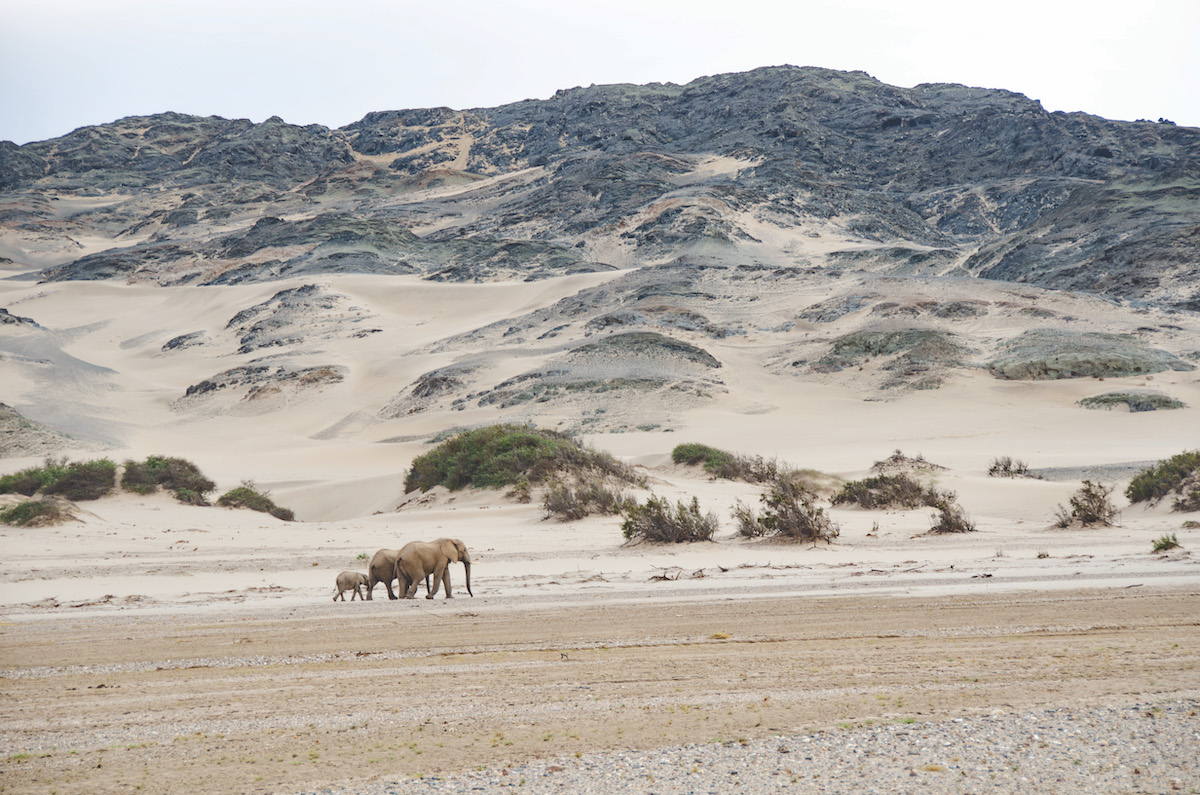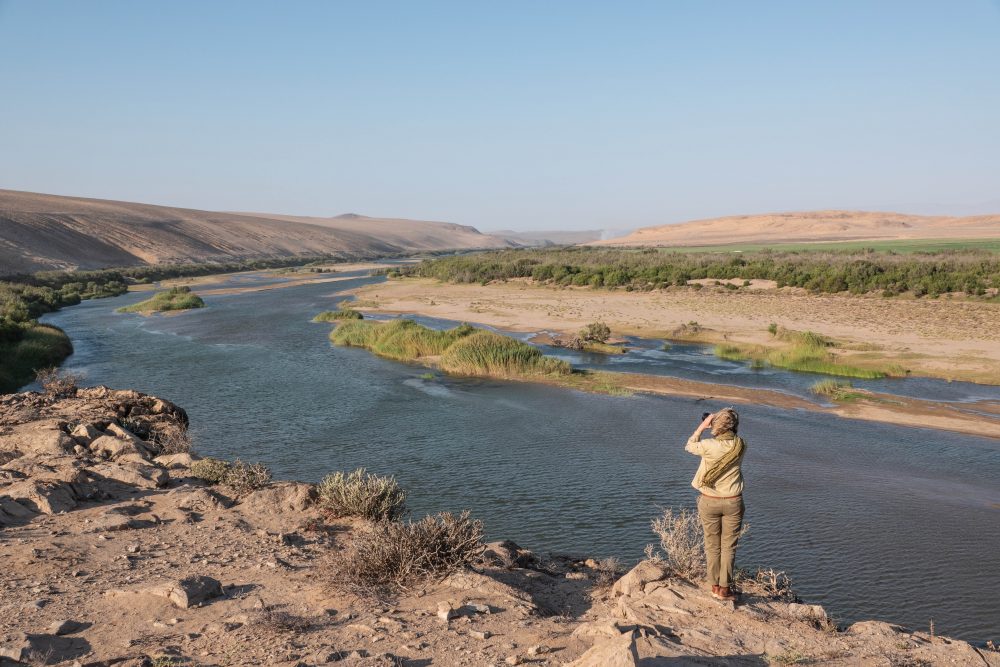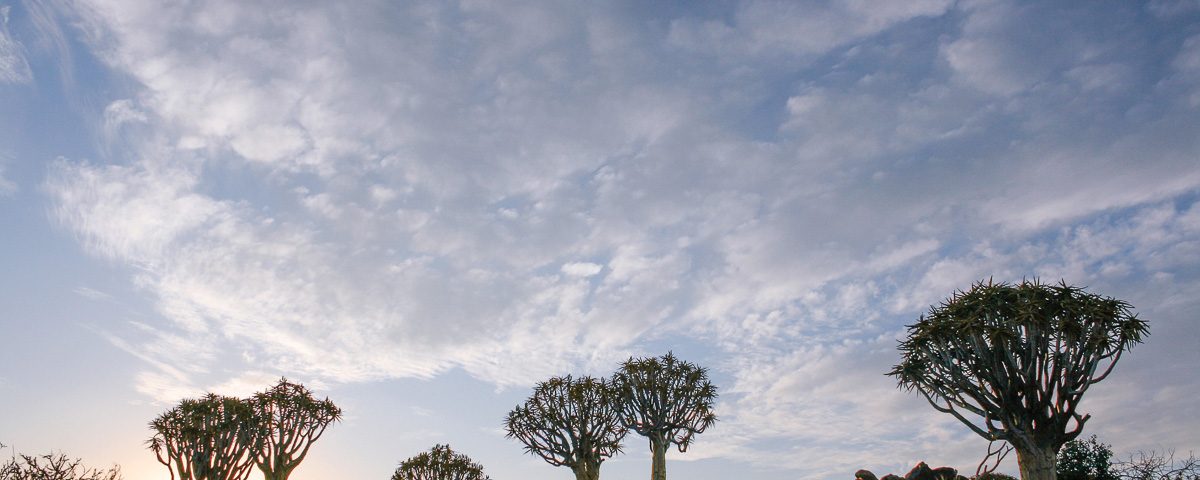
Special spots: Skip the crowds and visit Namibia’s lesser-known places
December 11, 2019
Oranjemund – Transformation of a desert legend
December 11, 2019Anyone who knows the first thing about Namibia knows that our sunsets are notoriously flamboyant. In the afternoon, when and if the soft cirrus clouds accumulate above the horizon, the African sun puts on a technicolour tutu and dances to the tunes of crickets. It’s this kind of sunset that deserves a rightful place on any bucket list.
Text Charene Labuschagne
Lucky for my Namibian born and bred self, they’ve always been a regular occurrence – providing sufficient oohs and ahhs and awe-inspiring endings to nourish my soul. It wasn’t one of those kinds of sunsets on that day, however.
My family and I, with my German exchange student in tow, were making our way to Keetmanshoop in the last light of the day. Low on fuel and weary after a long day’s road trip and subsequent Neil Diamond tribute, we pulled into the first service station we could find. The driving wasn’t over. We still had 20 km to go before we could unwind and tuck in.
Hannah – my honorary sister from Heidelberg – and I were summoned to get out of the car and experience the gem that is Keetmanshoop after sunset. In the confines of the fuel station’s quick-shop, we had front-row seats for a real-life telenovela. Now would be an appropriate time to mention that this wasn’t your average 24-hour store. All the groceries were kept behind the counter, which required you to place your order and frantically direct a sassy cashier (in a neon T-shirt exclaiming “Here to Party!”) to the goods you desired – all from behind ma mesh screen, I may add. Once my mum had gone through the effort and was ready to pay for our stale chips and warm coke, the neon-clad local prioritised another customer who had been lurking in the background. Their brief dialogue remains a mystery as it was all in a low, mumbled murmur. But the gist of it could be summarised by the cashier’s response, which was a strongly worded ode to the customer’s mother. Rejuvenated by the comical fuel station experience, we braved the remainder of the road to the Quiver Tree Forest.
Upon arrival at Quiver Tree Rest Camp, we were eager to freshen up and unpack our vehicle before dinner. This was not an option, the barefoot hostess told us. Politely, she directed us to help ourselves to an authentic Afrikaans carrot salad, local meats and an enormous bowl of white rice at the buffet. With the resident cat and hound paying their routine visit to our table, we ate up and skedaddled to our suites.
I was a keen photographer at the time, dabbling in the art as it was one of my subjects in high school. My teacher’s instructions were that I was to wake well before sunrise in order to capture the dawn break over the Quiver Tree Forest. Now, the Labuschagnes are a slow-starting lot. So far I had never seen a sunrise in my 17 years of existence – proof
of the fact that 10 am is the customary wake-up call in our household. So, needless to say, my enthusiastic knocking on my parents’ door at 5 am was met with low growling – the kind displayed in brackets in thriller movie subtitles, right before bad things happen. By hook or by crook I managed to assemble my entourage and we trekked the short distance from our accommodation to the forest.
Hannah from Heidelberg was promised a forest, so the sight of the sparsely scattered quiver trees had her puzzled. I had visited her hometown just the year before and saw first-hand what forests actually look like (they have nothing of our kind, I assure you.) As dawn broke on the boulders to the south, promising yet another scorchingly hot day, I pulled out my birthday present of a tripod and propped my nifty DSLR on top – giddy with excitement about the good grades these photos were going to get me. It was in that instant that Hannah skittishly dared to ask where the forest was, as she couldn’t understand what I was photographing. A brief moment of silence followed, and my half-asleep parents broke out into rapturous laughter, loud enough to wake up the nearby hungover town.
In all honesty, I don’t think we ever filled her in on the fact that said sparsely scattered trees were, in fact, the forest. She probably gathered as much from our soul-shaking silence – neither I nor my parents, who have lived in Namibia their whole lives, had seen the Quiver Tree Forest, let alone at sunrise (or an actual sunrise, for that matter).
We spent about two hours wandering about, playing hopscotch with the massive granite boulders. Upon returning
to our accommodation, the other guests just sitting down for breakfast. Jeez, I thought – these people have no idea what they have missed. They were bound for the forest well after breakfast which, in my opinion, albeit beautiful, doesn’t compare to the light on those trees at dawn.
We gathered our belongings and took to the road once more, all of us a little bewildered by the fantastic landmark we had just visited.
I have always appreciated sunsets. My favourite memories are of the whole gang on the deck of our family beach house in Henties Bay. We’d gather thereafter our separate daily doings – with bubbly and Zimmer & Gerrard – and watch the sun dip into the Atlantic. On camping trips at Oanob Dam and on hilltops in Windhoek with friends, the fire on the horizon would start a fire in me. But ever since that day near Keetmanshoop, when my parents got up at 5 am against their will, and my exchange student was underwhelmed by our definition of a forest, sunsets have sort of taken the back burner. The fact that Namibia has – in my biased opinion – both the single most beautiful sunrises and sunsets proves that whatever happens in between is nothing short of remarkable.
The grades were mediocre, so I’ve resorted to inspiring you with my colleague’s professional images instead. Through photography, we try to capture a scene in the most beautiful way possible, but the fact of the matter is that the Quiver Tree Forest at sunrise is already as beautiful as it’s going to get. So you might as well play hop-scotch with the boulders instead.
You might also enjoy reading: Explore the deep south of Namibia


